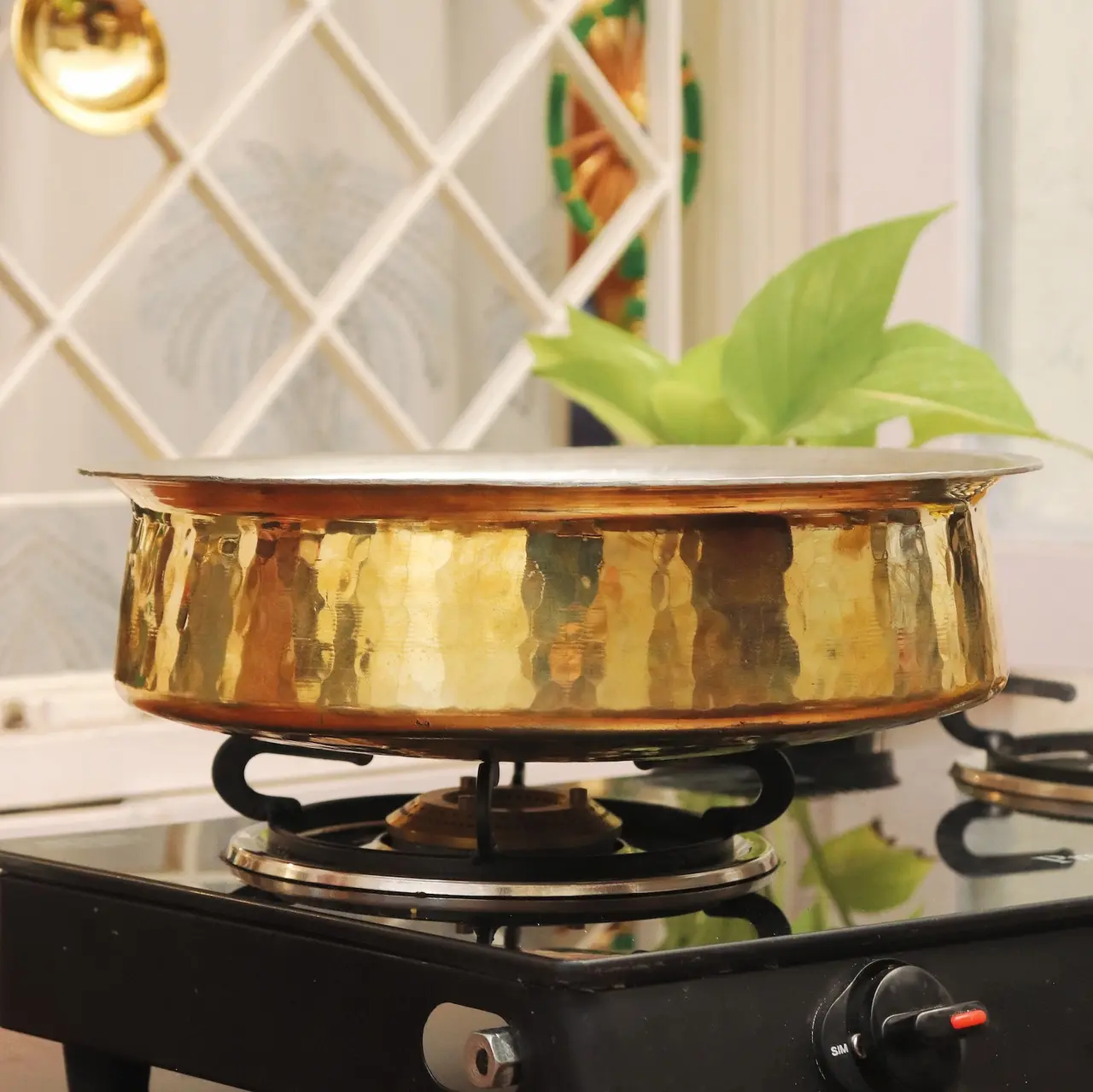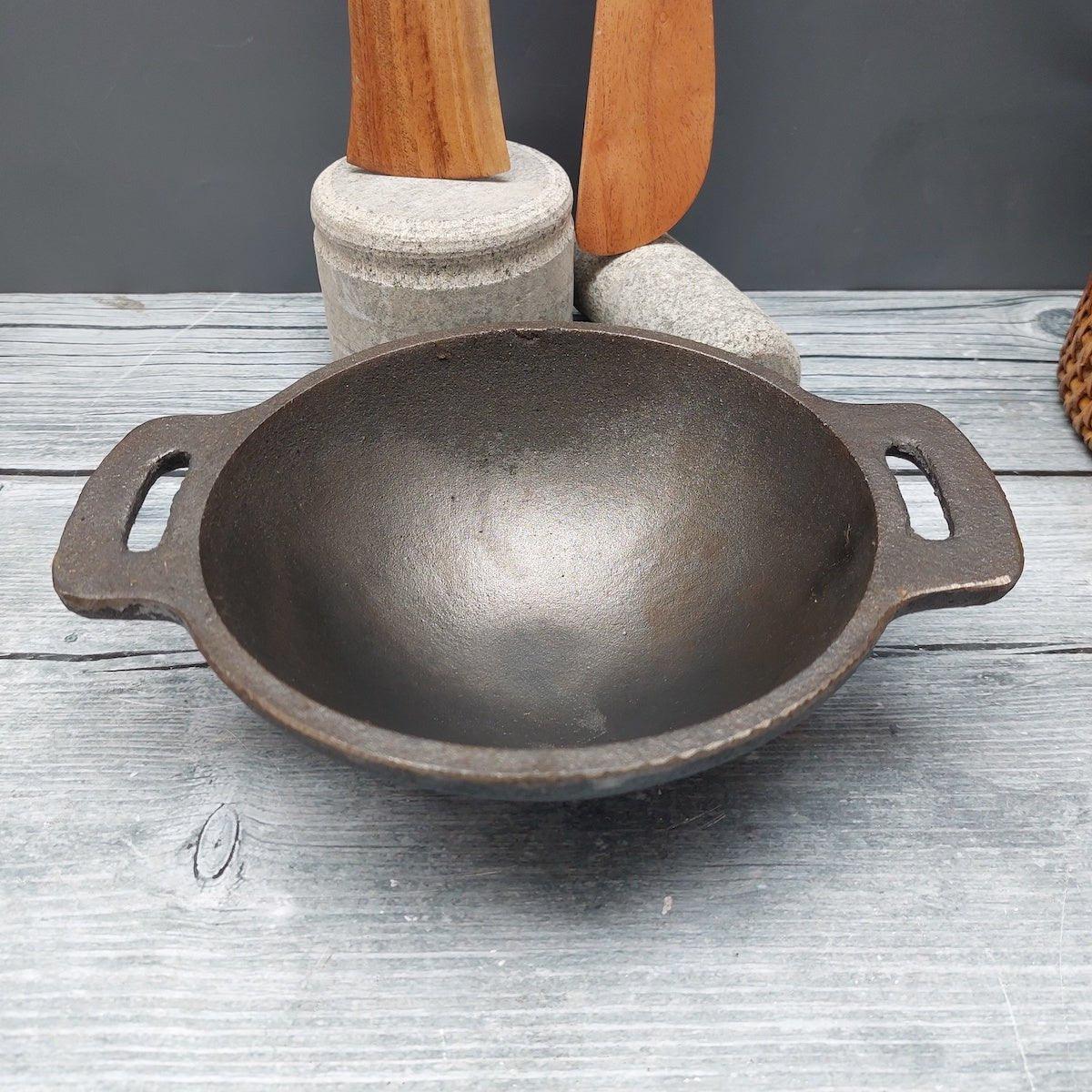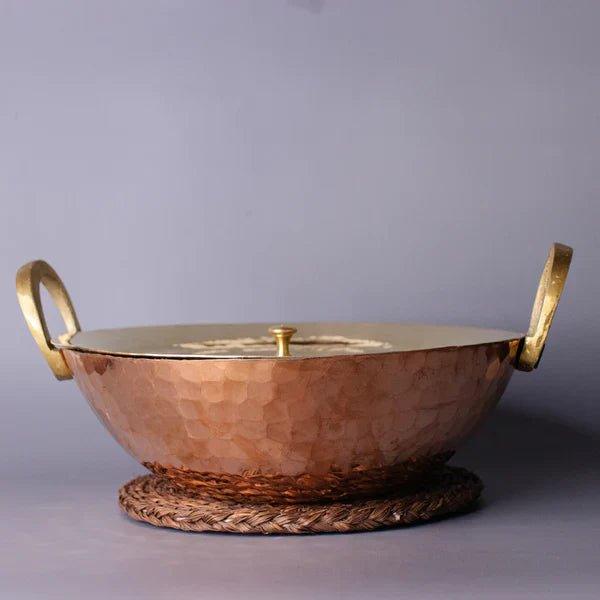Introduction to Traditional Indian Cookware
Traditional Indian cookware is an integral part of Indian cuisine. It includes various types of vessels and utensils that have been used for generations in Indian households. These traditional cookware items are not only functional but also hold cultural significance. They are often made from materials like clay, copper, brass, and iron, each serving a specific purpose in Indian cooking. This blog will explore the history, significance, and usage of traditional Indian cookware, providing insights into how these utensils can enhance your cooking experience.

Types of Traditional Indian Cookware
Traditional Indian cookware comes in various types, each having its unique purpose and specialty. Here are some common types you may come across:
- Tawa: A flat or slightly concave griddle used for making Indian flatbreads like chapati and paratha.
- Kadai: A deep, circular cooking pot with handles, ideal for frying, sautéing, and making curries.
- Cooking Pots: A sealed pot that cooks food quickly, commonly used for cooking lentils, rice, and meats.
- Handi: A traditional Indian cooking pot with a wide mouth and a narrow base, perfect for slow cooking curries and biryanis.
Each type of cookware is versatile and essential for cooking authentic Indian dishes with traditional flavors.
Benefits of Using Traditional Indian Cookware
Traditional Indian cookware, such as clay pots and cast iron pans, offers various benefits compared to modern cookware. Here is why many people swear by their traditional Indian cookware:
- Natural Flavors: Cooking in these vessels enhances the natural flavors of the food.
- Nutrient Retention: The slow cooking process helps retain the nutrients in the food.
- Even Heat Distribution: These cookware types distribute heat evenly, ensuring your food cooks uniformly.
- Durable: Traditional Indian cookware is known for its durability, lasting for years with proper care.
- Environmentally Friendly: Using these cookware types is eco-friendly, as they are often made from natural materials.
How to Clean and Maintain Traditional Indian Cookware
Traditional Indian cookware, like iron kadai and brass utensils, requires special care to maintain their quality over time. To clean and maintain them effectively, follow these simple steps:
- Hand-wash your traditional Indian cookware using a gentle dish soap and warm water. Avoid using harsh chemicals or abrasive scrubbers that can damage the cookware’s material.
- Dry the cookware thoroughly after washing to prevent rusting, especially for iron cookware.
- Season your iron cookware regularly to maintain its non-stick surface and prevent rust. To season, apply a thin layer of oil inside the cookware and heat it on the stove until it smokes. Let it cool and wipe off excess oil.
- Store your traditional Indian cookware in a dry place to prevent moisture buildup, which can lead to rusting.
By following these simple steps, you can keep your traditional Indian cookware in excellent condition for years to come.
Seasoning Traditional Indian Cookware
To season traditional Indian cookware, wash it with warm, soapy water and dry it thoroughly. Then, heat the cookware on low heat with any cooking oil for about 10-15 minutes. Let it cool, wipe off excess oil, and your cookware is seasoned and ready for use.
Cooking Techniques with Traditional Indian Cookware
Let’s talk about how you can use traditional Indian cookware for your cooking. Traditional Indian cookware like cast iron pans, clay pots, and brass vessels have been used for generations for their unique cooking abilities. Here’s how you can make the most out of them:
- Season your cast iron pan correctly to prevent food from sticking and to enhance the flavors of your dishes.
- Cook slowly in clay pots to retain the natural flavors and nutrients of the ingredients.
- Use brass vessels for slow cooking to allow the ingredients to meld together and create rich, aromatic dishes.
By using these traditional cookware items properly, you can elevate your cooking skills and create delicious, authentic Indian dishes at home.
Tips for Storing Traditional Indian Cookware
To keep your traditional Indian cookware in top condition, store it in a dry place to prevent rusting. Avoid stacking your cookware to prevent scratches and dents. Lining each piece with a thin cloth can help protect it further. Consider hanging larger items, like pots and pans, to save space and prevent damage. If possible, store your cookware away from direct sunlight to maintain its original color and finish.
Conclusion: Embracing Tradition in Your Kitchen
Before you conclude, remember that traditional Indian cookware is not just about cooking; it’s a connection to your roots and a way to honor your culture. By using these utensils, you are preserving age-old traditions and flavors that have been passed down through generations. Embracing tradition in your kitchen is not just about the tools you use, but also about cherishing the memories and stories that come with them. So, next time you cook with your traditional Indian cookware, let the warmth of tradition and history infuse your dishes, making your meals more than just food but a celebration of your heritage.




2 comments
N J Trivedi
Hello Good Morning- I am from Ahmedabad, Gujarat. If you are interested to open a store here I am interested to get a franchisee, please send me details of your business. Thank you
Ranjana singh
I love all the activities done by zishta and cookware also
Leave a comment
All comments are moderated before being published.
This site is protected by hCaptcha and the hCaptcha Privacy Policy and Terms of Service apply.